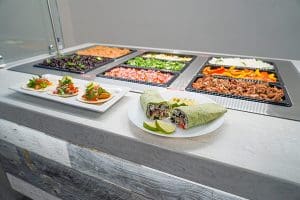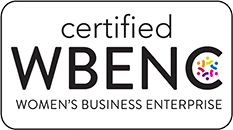With today’s increasing food costs, operators are seeking ways to mitigate food waste. At the…
The Top 4 Ways You Might be Using Food Wells Wrong

Food wells are an essential part of any commercial foodservice business. They perform key roles in displaying food choices as well as heating or cooling menu items to specific temperatures. In addition to showcasing an establishment’s menu items, they play a critical role in food safety and must follow certain guidelines to maintain stringent industry standards.
Although many operators feel that operating and maintaining wells is second nature, the truth is that food wells are often used in a manner that results in poor performance or even compromises food safety.
Could you inadvertently be using your hot or cold food wells wrong?
Here are the a few ways you might be using your hot and cold food wells incorrectly:
- Raising cold wells flush to the countertop. Every operator has an interest in improving the appearance of food choices or making it easier to access by a customer or server.But the fact is, most cold wells have been designed for pans to be recessed 3 inches. Due to the way cold air is circulated beneath the pan, raising the pan by propping it from underneath can change the temperature of the food product and cause a critical safety hazard.
Solution: LTI’s TempestAir system provides a patented alternative that holds food flush to the counter while maintaining appropriate temperatures for food safety.

- Neglecting to drain and replace the water in hot wells daily. Most hot wells are designed to be used with water, and that water needs replaced daily.
It’s an easy thing for staff to skip on busy days — it’s just water, right? What you might not know is that many municipalities use disinfectant additives in water that can be corrosive to stainless steel, such as chloramines. These additives are further concentrated as water is repeatedly heated and evaporates.
Additives that corrode stainless steel can result in hot wells “pitting” over time. Pitting is a breakdown of the passive chromium oxide layer on the stainless steel, and once this begins, it can spread rapidly and cannot be repaired. Because we are facing stainless steel shortages and huge spikes in cost to purchase stainless equipment, simply replacing wells isn’t always an easy solution.
Solution: Drain the water each day and clean the well with mild soap and water. Daily. No exceptions. LTI’s serving pros have seen instances where water has stayed in a well for weeks or months before being fully changed.
- Adding ice to cold pans. In the past, refrigeration technology for cold pans was not as robust as it is today. Wells were originally designed to have ice added to them, with the refrigeration intended to keep the ice from melting, rather than providing a cool environment independently.
Today’s upgraded technology allows cold well pans to be held at appropriately cold temperatures without needing to add ice and hope for the best! In fact, adding ice to today’s cold well pans can have an adverse effect, as cold pan sensors will detect the sudden decrease in temperature and respond by shutting off the compressor.
This temperature instability can result in the likelihood of foods being held at an unsafe temperature.
Solution: LTI’s QuickSwitch technology offers flush pans that meet NSF-7 requirements, so ice isn’t required at all to run most efficiently.
- Trying to turn a hot well into a makeshift cold well. We have seen situations where operators are in a bind and must think on their feet to problem solve an unexpected menu change.
Although adding ice to a powered-off hot well to create a makeshift cold well might seem reasonable in theory, it’s a dangerous gamble with the possibility of creating a food safety issue. Not to mention it would certainly be frowned upon by a health inspector!
Solution: Install a QuickSwitch food well system to alleviate the difficulty of last-minute menu switches. You can easily transition from hot to cold (or vice versa) in an hour.
Although the operation of your food wells may seem like second nature, it is beneficial to periodically evaluate your hot and cold well systems in terms of both efficiency and safety. Taking advantage of the latest technologies available in foodservice equipment can make good business sense!





